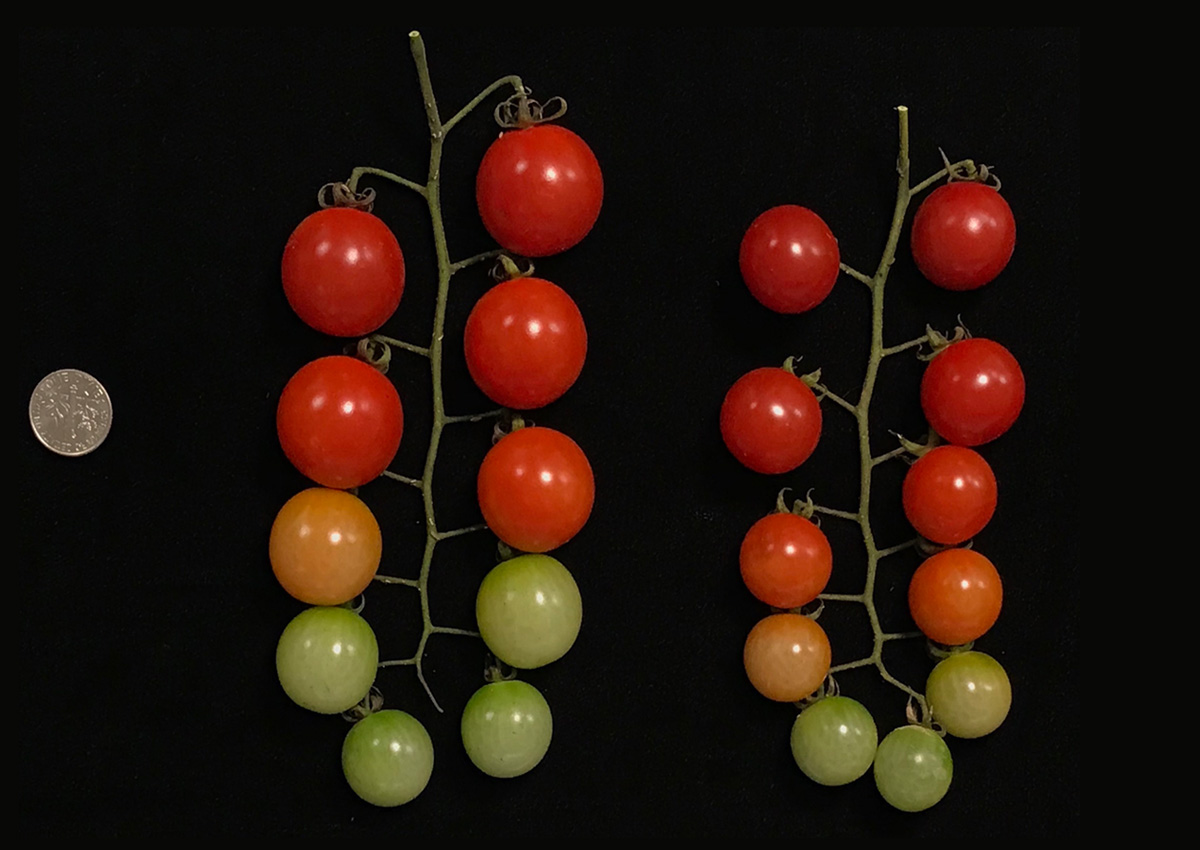
Study of 100 Varieties Reveals Tomato's Hidden Mutations
July 1, 2020| |
Researchers led by Zachary Lippman at Howard Hughes Medical Institute (HHMI) have identified long-concealed hidden mutations within the genomes of 100 types of tomatoes, including an orange-berried wild plant from the Galapagos Islands, and varieties typically processed into ketchup and sauces. The team's analysis is the most comprehensive assessment of such mutations – which alter long sections of DNA – for any plant and could lead to the creation of new tomato varieties and the improvement of existing ones. Lippman says that a handful of the mutations his team identified alter key characteristics, such as flavor and weight.
Lippman's team studied mutations that are much bigger than what scientists usually study. Such mutations, called structural variations, modify the DNA's structure by copying, deleting, inserting, or moving long sections of DNA elsewhere in the genome. The research team not only found these mutations in tomato and its wild relatives but also determined how they function within the plants.
The study, conducted in collaboration with Michael Schatz at Johns Hopkins University and others, identified more than 200,000 structural mutations in tomatoes using a technique called long-read sequencing. The majority of the mutations they found do not change genes that encode traits, but many of these mutations alter mechanisms controlling genes' activity. One such gene, for instance, controls tomato fruit size. By modifying the DNA structure, Lippman's team was able to alter fruit production. Plants lacking the gene never made fruit, while plants with three copies of the gene made fruit about 30 percent larger than those with just a single copy. Lippman's team also showed how DNA structure can influence traits.
For more details, read the article in HHMI News.
| |
You might also like:
- USDA Approves Field Trials of Gene-edited, Virus Resistant Tomatoes
- Gene Editing for Developing GM Spicy Tomatoes
- GM Tomatoes Give Fish a Pinkish Glow
Biotech Updates is a weekly newsletter of ISAAA, a not-for-profit organization. It is distributed for free to over 22,000 subscribers worldwide to inform them about the key developments in biosciences, especially in biotechnology. Your support will help us in our mission to feed the world with knowledge. You can help by donating as little as $10.
-
See more articles:
-
News from Around the World
- Webinar: Bio-entrepreneurship Opportunities in Genome Editing
- African Women for Biosciences Embrace Social Media for Communicating Science
- Study of 100 Varieties Reveals Tomato's Hidden Mutations
- 15 Canadian Universities Sign Charter to Address Climate Change
- Scientists Complete Field Trial of Swedish Transgenic Trees
- EFSA Releases Scientific Assessment of GM Maize MZIR 098
- Plant Gene to Boost Phosphorous Intake
-
Research Highlights
- GM Rice Provides Natural Source of Antihypertensive Agents
-
Plant
- Gene Editing Leads to High Yield and Enhanced Aroma in Rice
- Computational Biology Experts Expand Genome Editing Applications
-
Read the latest: - Biotech Updates (November 5, 2025)
- Gene Editing Supplement (October 29, 2025)
- Gene Drive Supplement (February 22, 2023)
-
Subscribe to BU: - Share
- Tweet

